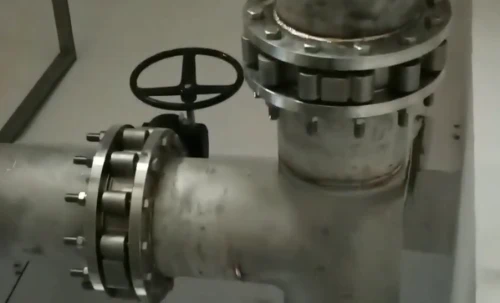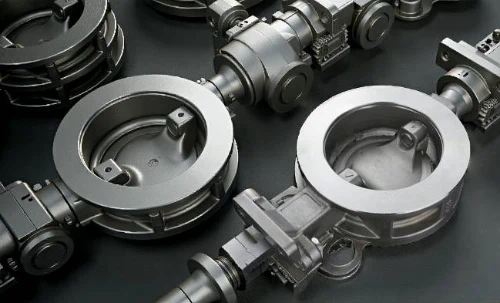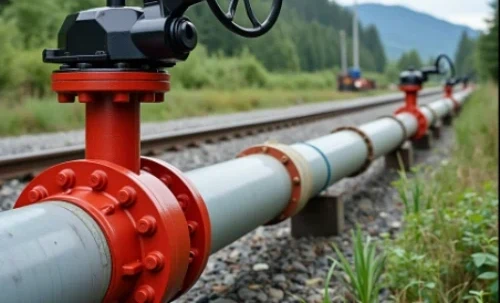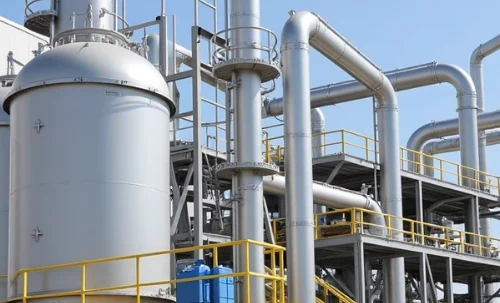Table of Contents
|
In industrial fluid control, the 'gate valve vs butterfly valve' debate is pivotal. Choosing correctly impacts efficiency, cost, and reliability. While both are essential, their designs create distinct advantages. This guide from JRVAL, a full-process butterfly valve factory, dissects these two valves to empower your decision-making. |
|||||||||||||||||||||
|
⊙ Part I: Gate Valve vs. Butterfly Valve: A Critical Choice for Flow Control |
|||||||||||||||||||||
|
The traditional choice for on/off isolation has long been the gate valve. Choosing the right valve is a strategic decision that directly impacts system efficiency, lifecycle cost, and operational reliability. While both are industry workhorses, their core designs create distinct advantages for specific applications. |
|||||||||||||||||||||
|
|
|||||||||||||||||||||
|
⊙ Part II: Understanding the Core Mechanics |
|||||||||||||||||||||
|
(1) The Gate Valve: Master of Unobstructed Flow |
|||||||||||||||||||||
|
• Principle: A linear-motion valve using a flat gate that slides perpendicularly into the flow to block it. • Advantage: When fully open, the gate is withdrawn, offering a full-bore path with minimal pressure drop, ideal for services requiring pigging or handling slurries. |
|||||||||||||||||||||
|
(2) The Butterfly Valve: Champion of Modern Versatility |
|||||||||||||||||||||
|
• Principle: A quarter-turn valve with a disc on a stem. A 90° turn moves the disc from open to closed. • Advantage: Fast actuation, lower torque, and a significantly lighter, more compact, and cost-effective design. This makes it a preferred choice for many applications, from a small 2 inch butterfly valve to a large 24 inch butterfly valve. • JRVAL's Expertise: As a leading china butterfly valve manufacturer, JRVAL's process begins with precision valve machining and butterfly valve assembly. Our advanced CNC centers ensure every component, from the body to the disc, meets exact specifications for all types, including the popular wafer type butterfly valve and robust lug type butterfly valve. |
|||||||||||||||||||||
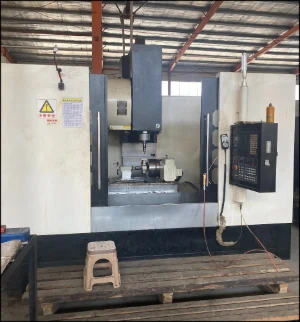
CNC Center 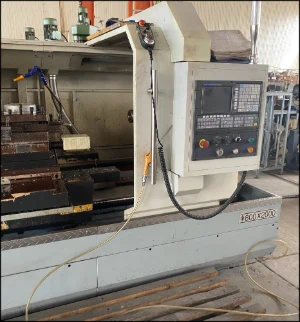
CNC Center 
CNC Center 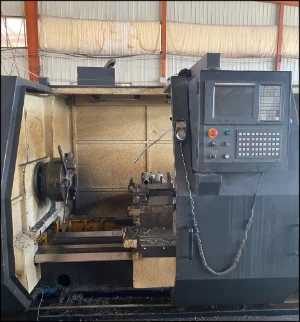
CNC Center 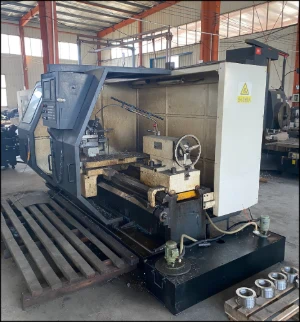
CNC Center 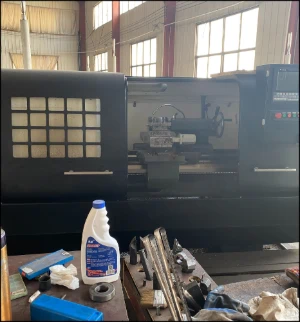
CNC Center 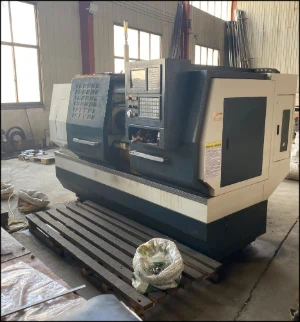
CNC Center 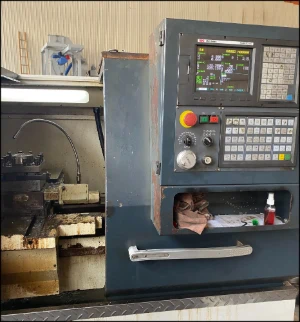
CNC Center 
CNC Center 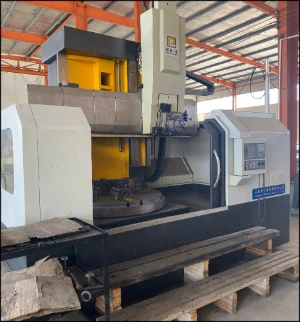
CNC Center 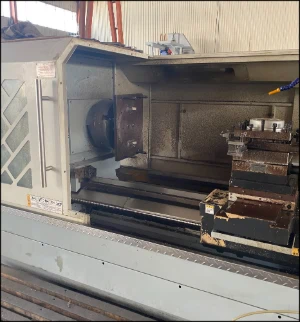
CNC Center |
|||||||||||||||||||||
|
|
|||||||||||||||||||||
|
⊙ Part III: The Ultimate Comparative Analysis Table
|
|||||||||||||||||||||
|
|||||||||||||||||||||
|
|
|||||||||||||||||||||
|
⊙ Part IV: Application Showdown: Which Valve Reigns Supreme? |
|||||||||||||||||||||
|
1. When to Choose a Gate Valve: High Pressure & Full-Bore Needs |
|||||||||||||||||||||
|
For main steam headers (e.g., class 600 butterfly valve or higher ratings) or oil pipelines requiring pigging, the gate valve is the traditional choice. Its full-bore design per API 600 offers no obstruction, ensuring negligible pressure drop and easy maintenance passage, making it superior for these critical isolation duties. |
|||||||||||||||||||||
|
2. The Butterfly Valve Advantage: Cost, Space, and Speed |
|||||||||||||||||||||
|
For large-scale water treatment, HVAC, or chemical processing, the butterfly valve's advantages are overwhelming. The discussion of lugged vs wafer butterfly valve often comes down to installation preference (end-of-line service for lug type), but both offer huge benefits. A 16 inch butterfly valve can be significantly lighter and less expensive than its gate valve counterpart. The compact wafer style butterfly valve is ideal for tight spaces, and its quarter-turn action is perfect for automation with a pneumatic butterfly valve or electric actuator, offering superior Total Cost of Ownership (TCO). |
|||||||||||||||||||||
|
3. The Throttling Dilemma: A Clear Winner Emerges |
|||||||||||||||||||||
|
Using a gate valve for flow control is a critical error, leading to rapid erosion. The butterfly valve is designed for this. While standard concentric valves with an EPDM seat butterfly valve design are good, advanced models like the double offset butterfly valve and triple eccentric butterfly valve (also called triple offset butterfly valve) offer exceptional, precise control. These triple eccentric butterfly valves, often featuring a metal seated butterfly valve design for high temperatures, are a specialty of top-tier manufacturers of butterfly valves like JRVAL. |
|||||||||||||||||||||
|
|
|||||||||||||||||||||
|
⊙ Conclusion: Your Expert Partner in Valve Selection |
|||||||||||||||||||||
| The verdict in the gate valve vs butterfly valve showdown favors the butterfly valve for most modern applications due to its superior cost, size, and control capabilities. Whether you need a stainless steel butterfly valve for corrosive media, a sanitary butterfly valve for hygienic processes, or a robust ductile iron butterfly valve, the versatility is unmatched. While this guide focuses on isolation and control, a complete system also requires reliable backflow prevention. For this, components like the wafer check valve, including the dual plate wafer check valve, are essential. As a comprehensive wafer check valve manufacturer, JRVAL ensures your entire flow control system is optimized. As a dedicated butterfly valve supplier china and source factory compliant with standards like API 609, JRVAL has the expertise to guide you. Contact us to discuss your project and get a quote for your wholesale butterfly valve needs. |
Need Help with Valve Selection?
We don't only sell generic valves. We provide engineered solutions tailored to the specific operating environment of your process area.


 JRVAL
JRVAL Jul 07 2025
Jul 07 2025